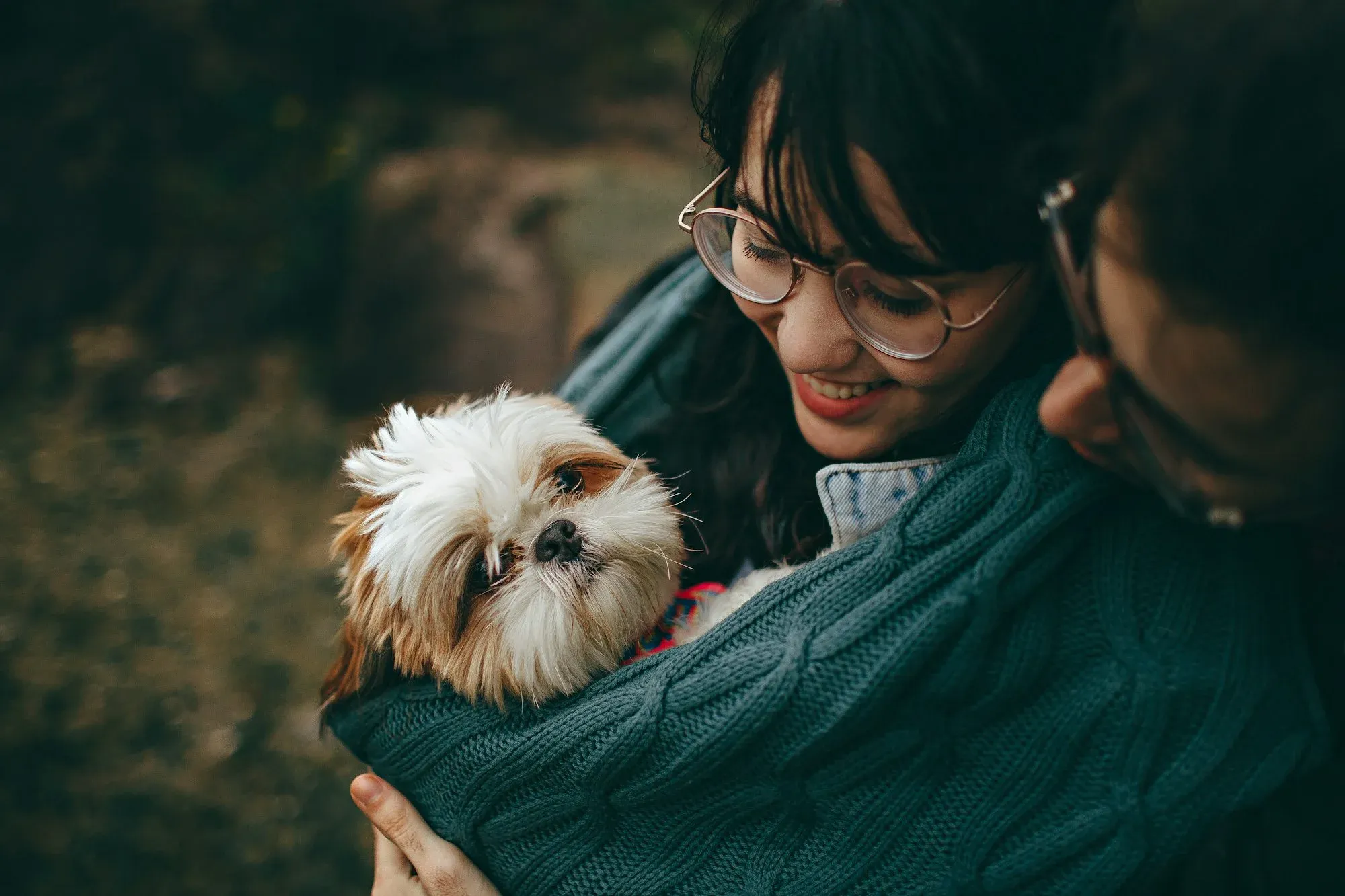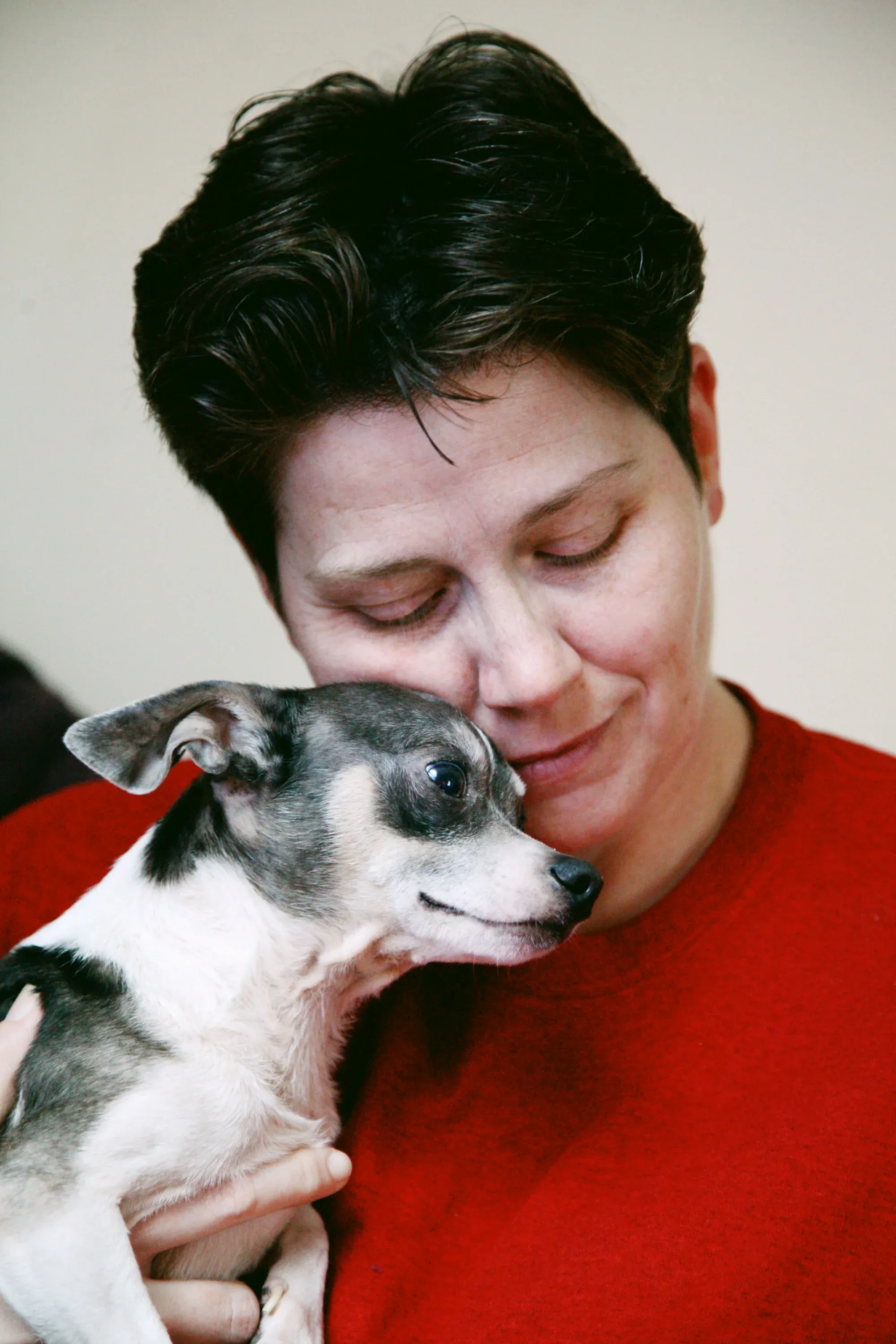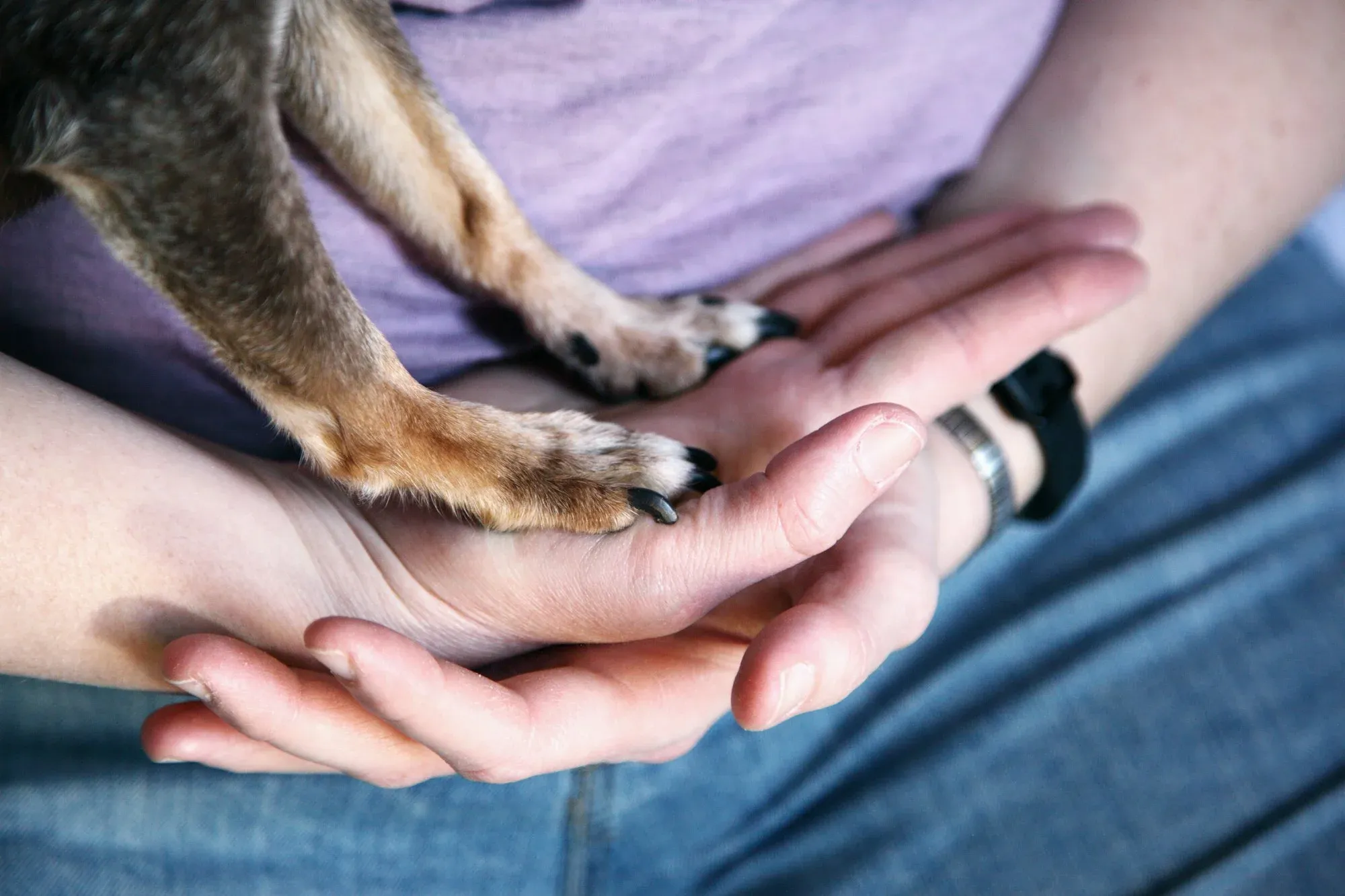Dogs, often referred to as humans' best friends, have a way of becoming integral parts of our families. Mastering how to bond with your dog not only provides them with a sense of security and love but also deepens your relationship with these loyal creatures. Here are some essential tips and techniques to solidify that bond.

Understanding Your Dog's Needs
Dogs are much like humans in that they have emotional, physical, and mental needs. For a genuine bond, it's crucial to recognize and cater to these needs. Imagine if you had a roommate who didn't understand or care about your preferences. Wouldn't that be frustrating?
Your dog's signals, from the wagging of their tail to their spirited barks, are their way of communicating with you. For instance, certain guardian dog breeds are known for their protective instincts and require a different bonding approach than playful breeds. This is just one example of how understanding breed-specific behaviors can guide you in your bonding journey.
Spending Quality Time Together
When you spend time with someone, you naturally get to know them better. It's the same with dogs. Whether it's a game of fetch, a long walk, or simply lounging on the sofa, these moments matter. And it's not just about the quantity but the quality of time spent.
One afternoon, I decided to venture on a short hike with my american mastiff, Bruno. Instead of a regular walk around the block, this little adventure provided us both with new experiences and memories. By the end of the day, it felt as though our bond had tightened, all thanks to that shared experience.
Training and Positive Reinforcement
Training sessions aren't just for teaching tricks or obedience. They're platforms for mutual understanding and trust. Remember, it's essential to use positive reinforcement. Praising your dog and giving them treats when they obey commands can strengthen the bond.
For example, during a training session, you might come across a plate of leftovers, and your dog might eye those delicious-looking onions. In such a scenario, it's crucial to teach them the dos and don'ts. For instance, answering the question, "can dogs eat onions?" with a firm "No" can prevent potential health issues, and this act of protection deepens trust.

Physical Touch
Just like humans, dogs also crave physical affection. Simple actions like petting, hugging, or even brushing their fur can create moments of connection. It's fascinating how, over time, many dogs develop specific spots where they love being scratched or petted. For instance, my Bernedoodle loves a gentle scratch behind her ears. Speaking of which, have you ever pondered, why do dogs have whiskers? These whiskers are incredibly sensitive and can pick up on minute changes in airflow and vibrations. So, when you're bonding with your dog, remember that these tactile experiences mean a lot to them.
Consistency is Key
One-off bonding activities are great, but consistency in your actions builds trust. When a dog knows what to expect from their owner, they feel more secure. Regular feeding times, walking schedules, and even consistent reactions to their behaviors can help in reinforcing the bond.
Socialization
Introducing your dog to various experiences, people, and other animals is a crucial aspect of their bonding journey. Socialization helps them become more adaptable and understanding. For instance, on one of our park visits, my Bernedoodle met another bernedoodle puppy. Watching them play and interact taught me more about her social preferences and habits.
Creating Rituals and Traditions
Developing small rituals can make a world of difference in bonding with your dog. It could be something as simple as a morning cuddle session or a special treat on Sundays. Over time, dogs come to anticipate these routines, and they become moments that both you and your dog cherish.
For instance, every Saturday evening, I have a "movie night" with my Jack Russell, Toby. We pop some popcorn (without the butter and salt for him!), lay out a blanket, and watch a movie together. This ritual has become something we both look forward to every week.
Learning Together
Never underestimate the power of learning together. While training sessions are great, you can also explore activities like agility courses, scent detection, or even dance. When you and your dog are both new to an activity, navigating it together can create shared moments of achievement and understanding.
Take, for instance, the day I enrolled in a doggy dance class. The sheer amount of laughter and joy as we both tried to get our steps right was unparalleled. By the end of the class, not only had we learned a new skill, but we also shared a multitude of joyful, funny moments that enriched our bond.

Travel and Exploration
Taking your dog on trips, whether they're short hikes or long vacations, introduces them to new environments and experiences. Exploring new places together creates shared memories and offers countless bonding opportunities.
One summer, I took a road trip with my Beagle, Lily. Every pit stop, every new trail, and even the minor challenges like setting up a tent became treasured memories. She got to explore new scents, sights, and sounds, and I got to see her excitement and curiosity at every turn.
Listening to Your Dog
It's not always about us making the effort. Sometimes, it's about stepping back and observing. Listening doesn't necessarily mean understanding barks or whines. It's about noticing behavioral changes, understanding their likes and dislikes, and respecting their boundaries. Maybe your dog doesn't like being petted by strangers or gets anxious in crowded places. Recognizing and respecting these preferences can deepen the trust your dog has in you.
For example, I once took my dog to a bustling dog park, only to realize she was more comfortable in quieter settings. Recognizing this, our subsequent visits were during off-peak hours. She felt more at ease, and the experience became more enjoyable for both of us.
Healthy Diet and Treats
What we feed our dogs plays a crucial role in bonding. Providing a balanced diet not only ensures they stay healthy but also conveys care and love. Every time you resist giving them harmful foods, like onions, or research about what's best for them, you're solidifying that bond.
For instance, after learning about the potential harms of certain foods, I began making homemade treats for my Spaniel, Rosie. The process of selecting ingredients, baking, and then watching her enjoy these treats created an added layer of connection between us.
Grooming Sessions
Grooming isn't just about keeping your dog clean; it's a hands-on way to bond. Whether it's a bath, a brushing session, or checking their paws after a walk, these moments allow physical closeness. Over time, many dogs come to enjoy these sessions, finding comfort in the routine.
I recall the initial hesitation my Siberian Husky, Max, had towards water. But with patience and making bath time a positive experience (with lots of treats and praise!), it's now an activity he eagerly anticipates. The entire process, from lathering the shampoo to drying him off, has become a cherished bonding routine.

Interactive Toys and Games
Investing in toys that challenge and engage your dog mentally can be a bonding activity. Puzzle toys, treat-dispensing toys, or even simple games like hide and seek can be both entertaining and beneficial for your dog's cognitive functions.
One evening, as a rainstorm made our regular walk impossible, I introduced my Boxer, Dexter, to a new puzzle toy. The sheer determination with which he tried to get the treats out, and the joy on his face when he succeeded, made it a memorable evening. It wasn't just about the toy; it was about the shared experience and the encouragement I gave him throughout.
Attend Workshops and Classes Together
Participating in workshops or classes designed for dogs can provide new bonding avenues. Be it agility training, obedience classes, or therapy dog training; these structured environments provide learning and interaction opportunities.
My adventurous journey with my bernedoodle, Benny, led us to an agility workshop. The hurdles, tubes, and seesaws were initially daunting, but with encouragement and teamwork, we navigated each challenge. It wasn't about how quickly or perfectly he completed the course; it was about the teamwork and trust we built in the process.
Tips & Techniques with Fi Dog Collars
Bonding with our canine companions is one of the most fulfilling experiences for a dog owner. While traditional methods of bonding are incredibly effective, advancements in technology, like the Fi Dog Collars, have provided new avenues to connect with and understand our dogs better. Let’s delve into how you can master the art of bonding, integrating this modern tool into the mix.
Understanding Your Dog's Needs with Fi
While guardian dog breeds might have different needs than an American mastiff, all breeds can benefit from the tracking and health monitoring features of the Fi Dog Collar. This smart collar allows you to understand your dog's activity levels, ensuring they're getting the right amount of exercise suited to their breed and age.

Spending Quality Time Together
When embarking on that afternoon hike or long walk, the Fi Dog Collar can track your dog's movements, ensuring they're safe and close by. The collar's real-time GPS tracking ensures that even if Fido gets distracted and dashes off, you can always locate him quickly, turning a potentially stressful situation into a quick reunion.
Training and Positive Reinforcement
While answering questions like "can dogs eat onions?" is essential, integrating technology can also be beneficial. Use the Fi Collar to set activity goals for your dog, and when they reach them, provide positive reinforcement. It’s an innovative way to combine technology with traditional training methods.
Physical Touch
Even when grooming or petting your Bernedoodle, you might notice the sleek design of the Fi Collar. It’s comfortable for them and stylish. Plus, while you're bonding over a physical touch, the collar is collecting data to give you insights into their health and activity.
Consistency is Key
With regular feeding times and walking schedules, the Fi Dog Collar can help. Set reminders or check in on your dog’s activity levels to ensure that they're getting consistent care, fostering a more profound bond through routine and understanding.
Socialization
The dog park is a great place for your Bernedoodle to meet other dogs. But with the added safety net of the Fi Dog Collar's location tracking, you can relax a bit more, knowing you have an extra layer of security while your dog enjoys some social time.
Creating Rituals and Traditions
Whether it's a special route you take during walks or a particular park you visit, the Fi Collar can track and record your favorite spots. Over time, you can see where you and your dog love to spend time together the most, turning data into cherished memories.
Learning Together
As you embark on new activities like agility courses, the Fi Dog Collar can monitor your dog’s physical exertion, ensuring they're getting a healthy workout without overdoing it.
Travel and Exploration
The Fi Dog Collar is perfect for adventurous duos. With its long battery life and precise location tracking, it's an indispensable tool for those who love exploring new terrains with their canine pals.

Listening to Your Dog
While behavioral changes and understanding their likes are crucial, the data provided by the Fi Collar can offer insights into any sudden changes in their activity or sleep patterns, giving you a fuller picture of their well-being.
Healthy Diet and Treats
A dog's diet directly impacts their activity. Monitor how changes in their diet might affect their energy levels using the Fi Collar’s activity tracker. It's an innovative way to see the impact of nutrition on their overall health.
As you groom, the Fi Dog Collar can take a break, but once it's back on, it's back to monitoring, ensuring your dog's health and safety remain a top priority.
Conclusion:
Bonding with your dog is an enriching journey that both the pet owner and the canine companion benefit from immensely. Mastering the art of this bond is more than just a series of tips and techniques—it's about understanding, respect, patience, and love. Through the strategies and insights provided, we've learned that true connection goes beyond simple commands or routine care.
It's rooted in consistent positive interactions, understanding a dog's unique personality, and appreciating the small moments of joy, curiosity, and companionship. As you move forward, always remember that every dog is an individual, and the bond you share is a reflection of the time, effort, and love you invest. May the journey of building and strengthening this bond bring countless moments of joy and fulfillment into your life, creating memories that last a lifetime.






